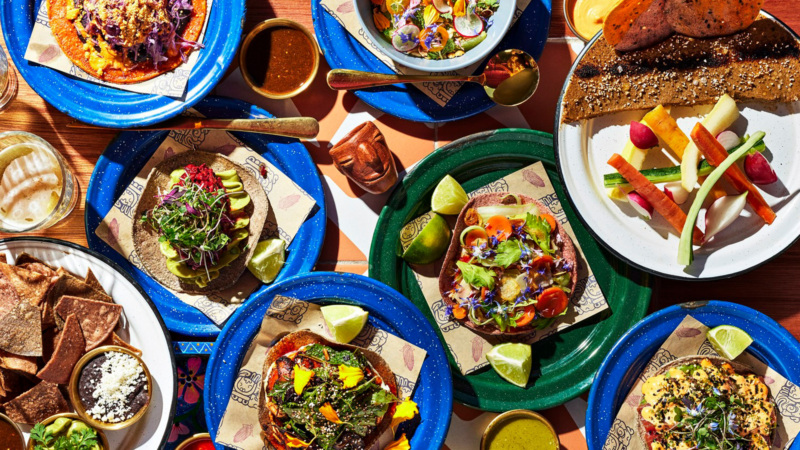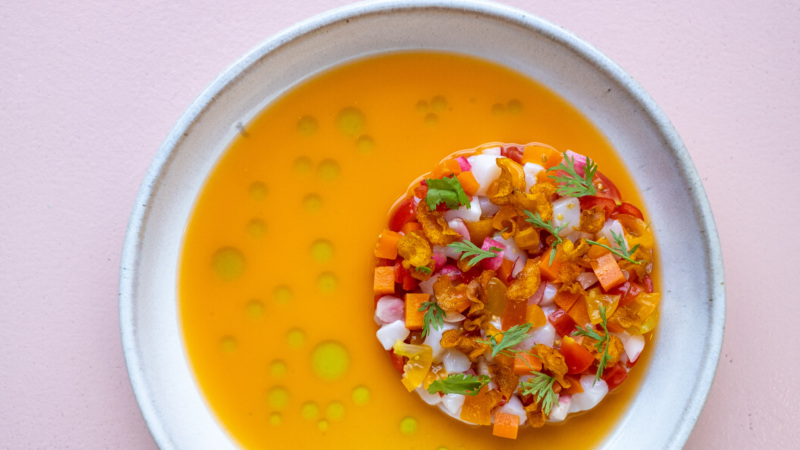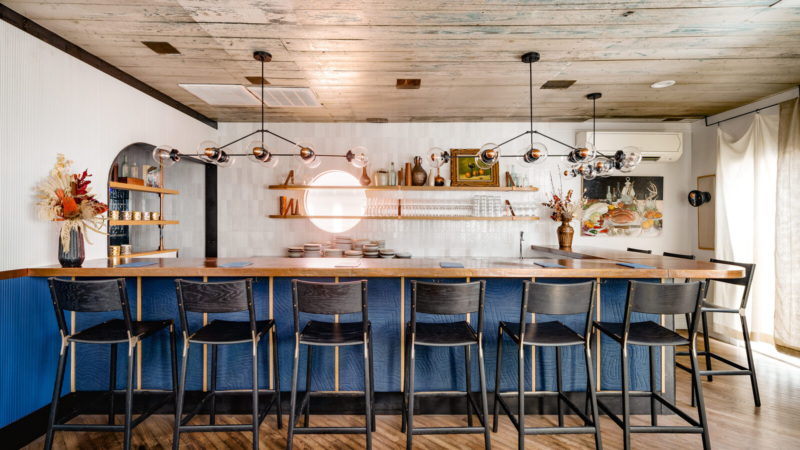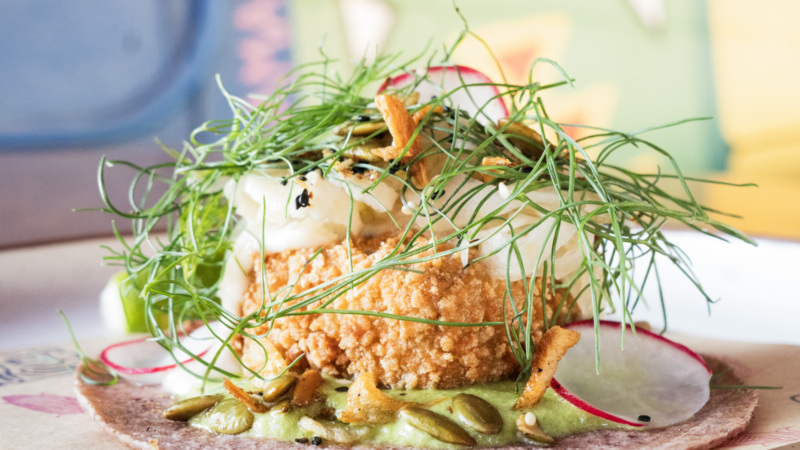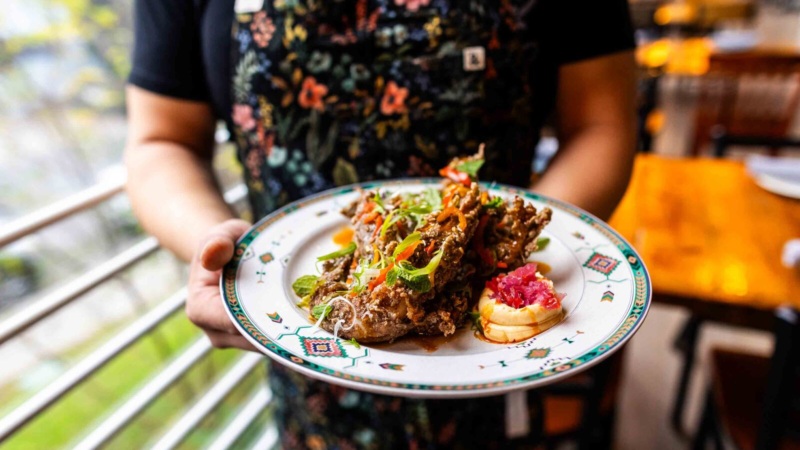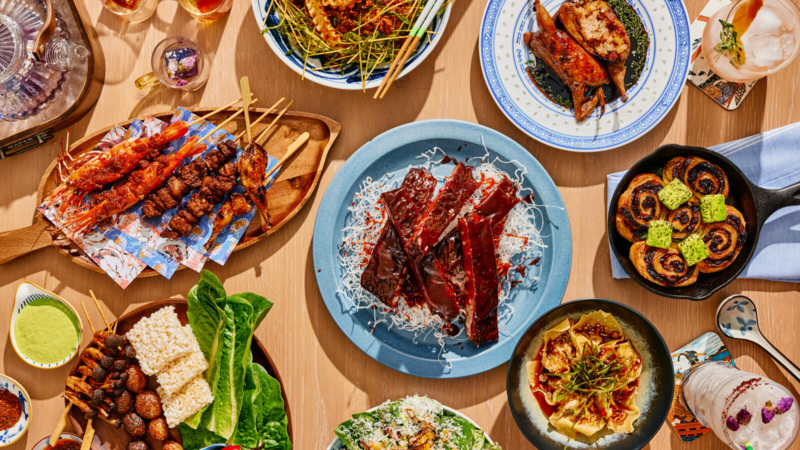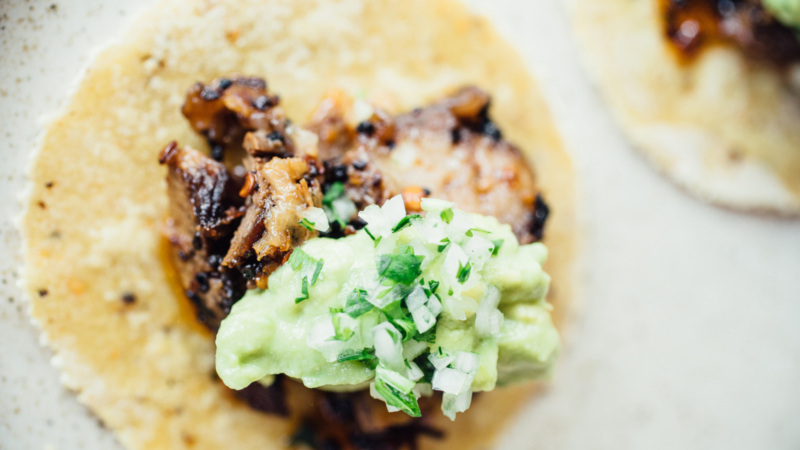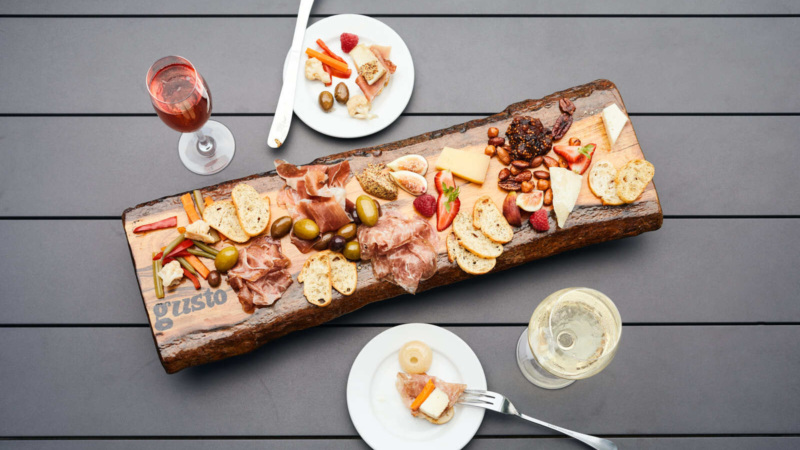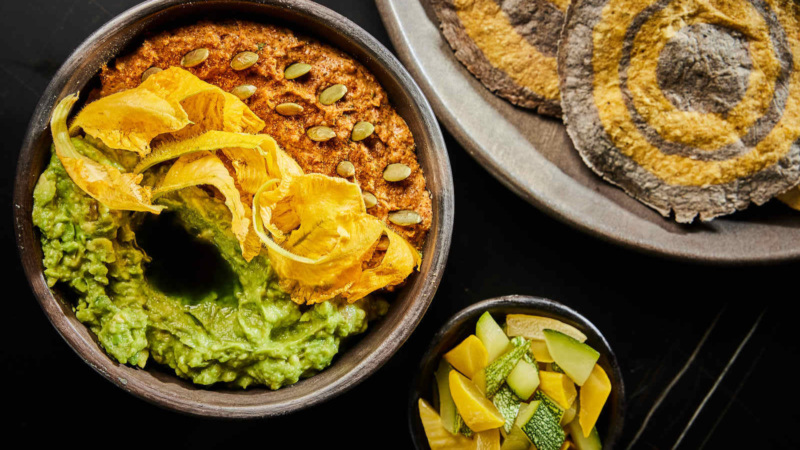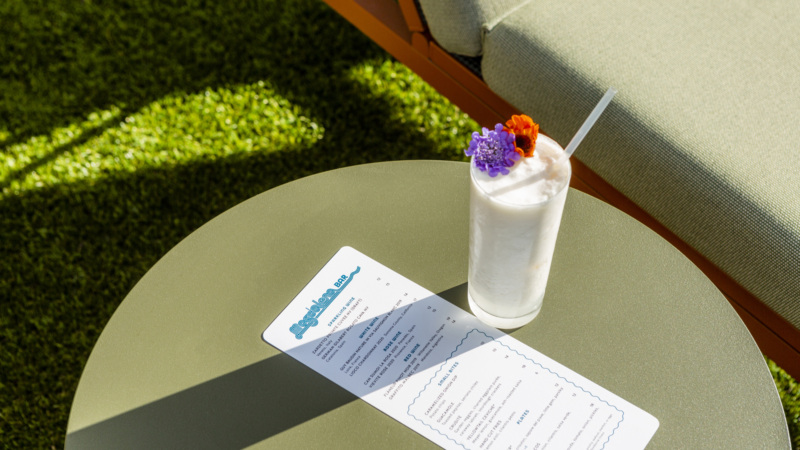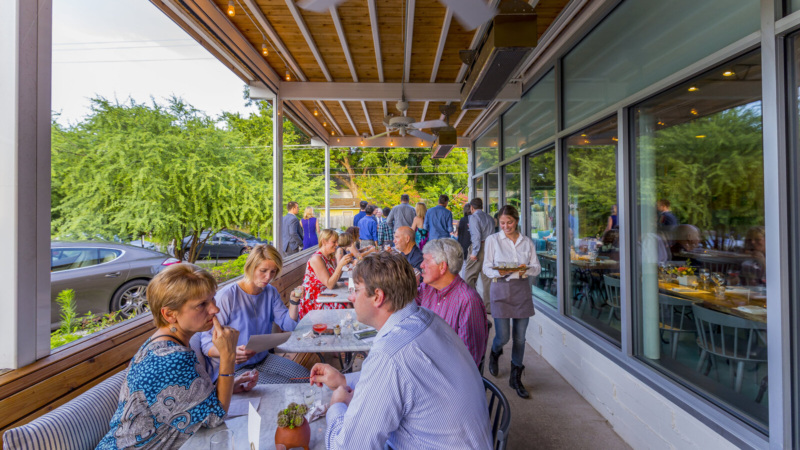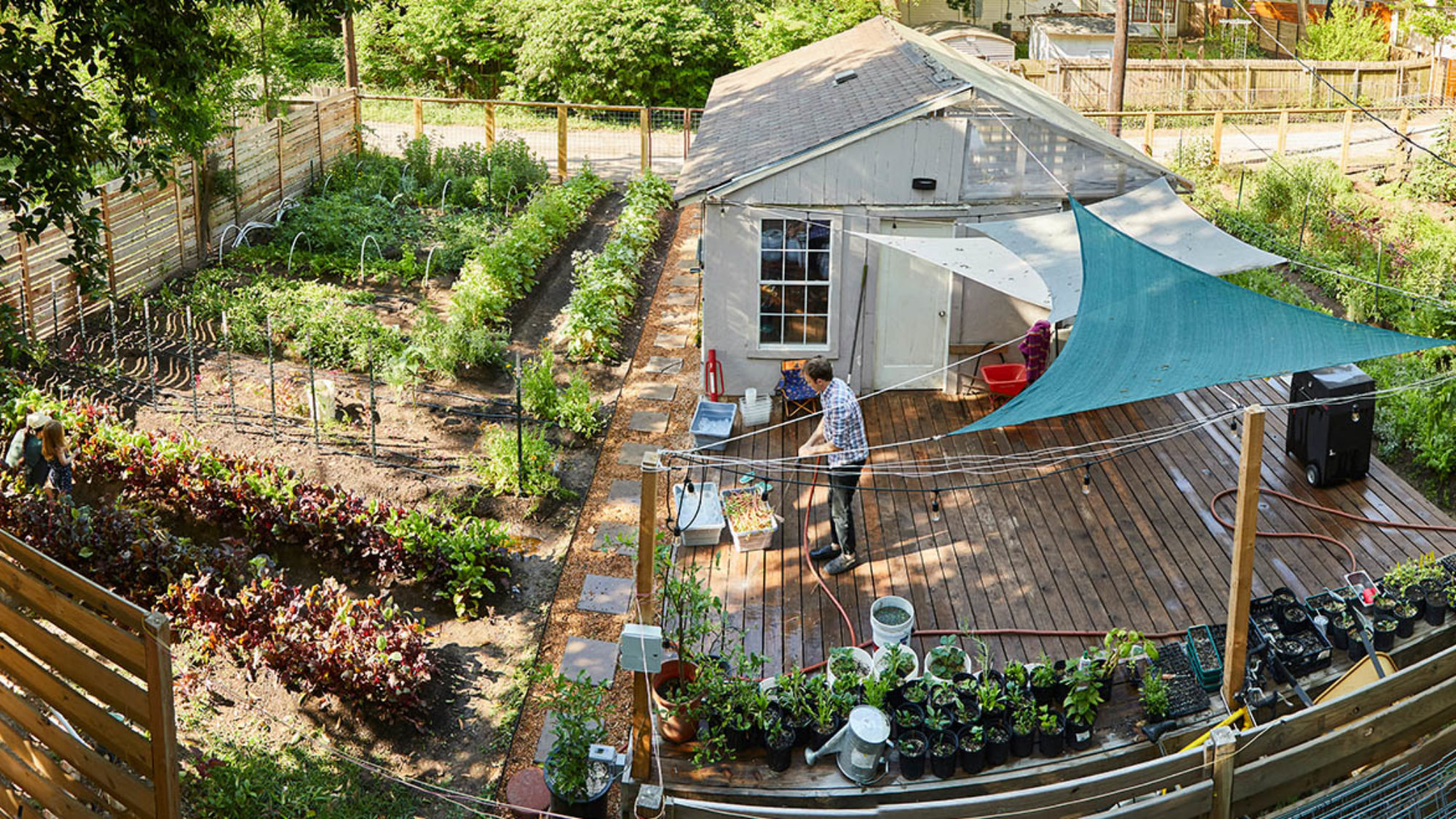
Pitchfork Pretty’s Garden Variety
Chef Max Snyder gets his hands dirty at the restaurant’s urban garden—the homegrown site of the Austin eatery’s famed farm-to-table cuisine.
One mile to the west of Pitchfork Pretty, the East Austin restaurant from owner Seth Baas and chef Max Snyder, is a garden. It’s actually Baas’ backyard, sacrificed to the art of growing vegetables. I met Snyder there on a spectacular October morning, shortly after the endless rains of Austin’s early autumn had cleared. The garden, he told me, was in transition.
“We’re at the end of our big planting for the next season,” he told me, walking between the rows. “There’s a little bit of eggplant and some okra. A couple random peppers. But we’re moving into cool weather stuff: greens, brassicas, radishes.”
When you dine at Pitchfork Pretty, you’ll get a menu that declares the food “Straight up Hill Country cuisine, straight from our garden.” My visit straddled the summer (tomatoes, cucumbers, chiles, okra, beans, eggplant) and fall (lettuces, fennel, broccoli, cauliflower, onions, squash) sections of this menu. There were a lot of greens and some bright purple baby kohlrabis. The garden’s resident farmer Rebecca Hume was sowing seeds for mustard greens in some empty rows. And giant, heavy pecans pelted the garden from the trees above.
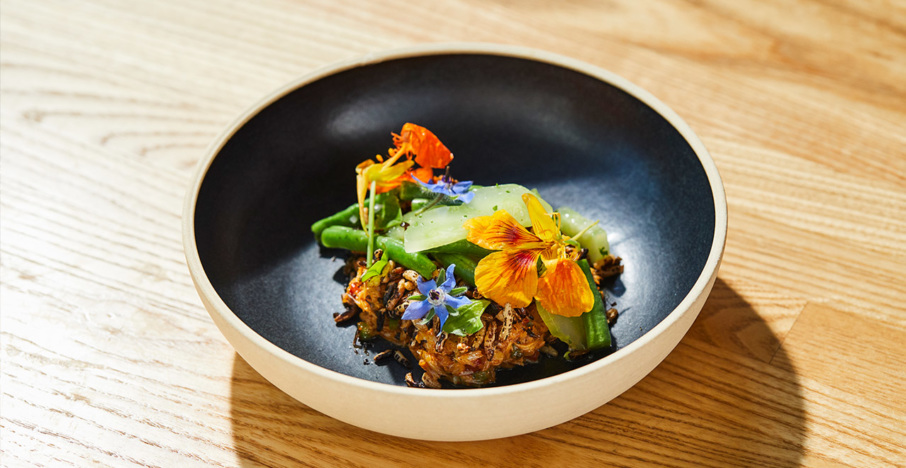
These plentiful ingredients translate to dishes: there’s an “End of Season Salad” with eggplant, cherry tomato, and tahini; and a potato gnocchi with bitter greens and basil. The menu is sprinkled with remnants of other seasons, too, like pickles, preserves, and infused liquors. Snyder says the restaurant goes to the trouble of maintaining the garden because “It [gives us] access to product…we can have that kind of bounty [and] diversity on the menu.”
The Pitchfork Pretty team seeks out varieties that aren’t available commercially, or even through local markets. “Just weird herbs that nobody else is really interested in working with,” says Snyder. “Trying different strange lettuces.”
Hume pipes up: “So many restaurants claim to do farm-to-table, but this is as farm-to-table as it gets. The chef is literally in the garden picking stuff, and it directly gets on your plate within a few hours.”
Snyder says the best part of having the garden is that they “have access to the peripheral parts of the plants, “like tender baby lettuce leaves and cauliflower trimmings.” He laughs: “Last year, we definitely made little bonsai versions of our cauliflowers, because we were clipping them in a certain way. We like the really delicate first leaf.” He spots a row of Napa cabbage: “If you’re going to buy this at the market, you’re going to get a whole, full-grown head. I really like using these first leaves because they’re super succulent.”
“We harvest daily,” Snyder tells me, “[harvesting] as much as we can, without depleting the plants too much.” He’s clearly proud of the garden and what it can produce. “Right now, it’s a lot of lettuces,” he says, but the kohlrabi will be ready for the menu soon. “Last year we braised [kohlrabi] in a miso and lemon juice and beer pickling liquid, and then grilled and served it with some mushrooms. We called it ‘beer pickled.’”
As we’ve been walking through the garden, Snyder’s been pocketing pecans as they drop around us. “Do you use them at the restaurant?” I ask. “I’m thinking about it,” he responds. “They’re really nice, some of them are really juicy.” A few weeks later, they ended up in a creamy pecan dressing for that garden salad. The kohlrabi? Lacto-fermented and turned into a pesto with lime juice and maple syrup, and used to dress a grilled roulade of cabbage, cauliflower, broccoli and kale leaves. That’s the key to Pitchfork Pretty’s garden: it’s all about the possibility of the ingredients. And in some cases, you might not see it until it’s right there on the ground in front of you.

